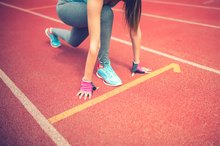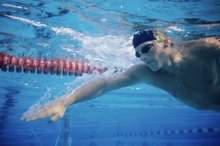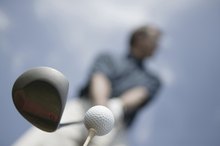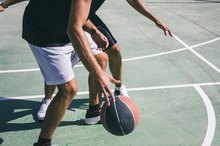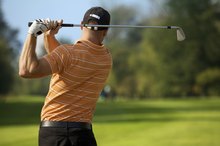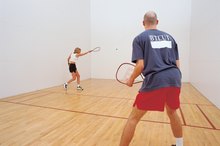What does fact checked mean?
At Healthfully, we strive to deliver objective content that is accurate and up-to-date. Our team periodically reviews articles in order to ensure content quality. The sources cited below consist of evidence from peer-reviewed journals, prominent medical organizations, academic associations, and government data.
- Harvard Health Publications: Golfing Can Be Good for You if Done Correctly
- Iowa Orthopaedic Journal: A Review of Hip Arthroscopy and its Role in the Management of Adult Hip Pain
- Iowa Orthopaedic Journal: A Review of Hip Arthroscopy and its Role in the Management of Adult Hip Pain
The information contained on this site is for informational purposes only, and should not be used as a substitute for the advice of a professional health care provider. Please check with the appropriate physician regarding health questions and concerns. Although we strive to deliver accurate and up-to-date information, no guarantee to that effect is made.
Hip Pain from Golf
Golf seems like a low-key sport to the casual observer. There's no running or tackling, many people play golf to relax, and even television announcers speak in hushed tones. In reality, golf demands a lot from your body. In addition to walking long distances from the first hole to the last, the high level of muscle control needed to execute a good shot is admirable. Golf creates its share of injuries. Hip pain is one symptom you may experience.
Symptoms
The symptoms of golf-related hip pain can vary in form and intensity, depending on what you have injured. Joint pain similar to arthritis may exist during play and linger after you've finished golfing. An article in the "Chicago Sun-Times" said some golfers who complain of such joint pain may be mistakenly diagnosed with arthritis; but actually suffer from torn cartilage. Pain in the hip and pelvis may occur from overextending the joint and can increase during activities that cause you to twist. Feeling your hip joint catch when changing position -- especially when rising from a sitting position -- can also be a type of hip pain experienced by golfers.
- The symptoms of golf-related hip pain can vary in form and intensity, depending on what you have injured.
- Feeling your hip joint catch when changing position -- especially when rising from a sitting position -- can also be a type of hip pain experienced by golfers.
Causes
Knee Injuries & Sprinting
Learn More
The main cause of hip pain from golf is the high amount of pressure placed on the joint and surrounding muscles during the swing. The external rotation of the hips during a swing can put significant strain on the joint when practiced frequently, as one does on an average 18-hole course. The speed at which you swing can also stress the hips if your swing is not controlled or smooth.
Playing Changes
You may be able to eliminate minor hip pain by changing the way you play your game. Learning the proper posture to keep when swinging -- with your back straight, feet planted shoulder-width apart, balance distributed equally on both legs -- can make a difference in the amount of strain you put on your back, hips and neck and can even improve your playing results. Swinging smoothly but not too hard also keeps your hip muscles and joints pressure-free.
Stretch It Out
Golf & Rhomboid Strain
Learn More
Stretching your hip muscles before you begin your round can prevent injury, no matter how you swing. One hip exercise you can try is sitting in a chair with your feet on the ground and your knees bent at a 90-degree angle. Place a ball -- the size of a basketball, soccer or kickball -- between your knees and use your upper leg muscles to squeeze. Hold the squeeze for up to 30 seconds.
- Stretching your hip muscles before you begin your round can prevent injury, no matter how you swing.
- Place a ball -- the size of a basketball, soccer or kickball -- between your knees and use your upper leg muscles to squeeze.
Medical Treatment
Golf injuries vary in severity; minor muscle strain, tendinitis, bursitis or joint pain can be alleviated with rest, icing and over-the-counter pain relievers. These measures are almost identical to recommended treatment for arthritis of the hip, according to "American Family Physician." If hip pain continues after playing modifications and home care, more involved medical treatment may be required -- including physical therapy, surgical repair for torn muscles and tendons, or even hip replacement 3.
Interesting Facts
According to the Sports Injury Bulletin, hip pain is a relatively new form of golf injury compared to past generations of golfers. Modern swing styles require a large amount of body rotation compared to a more restricted swing, which doesn't put as much strain on the hips.
Related Articles
References
- Harvard Health Publications: Golfing Can Be Good for You if Done Correctly
- Sports Injury Bulletin: Hip Exercises: Movement Pathologies - A Firm Hold on the Hip
- American Family Physician: Anterior Hip Pain
- Iowa Orthopaedic Journal: A Review of Hip Arthroscopy and its Role in the Management of Adult Hip Pain
- Mayo Clinic Staff. Golf Stretches. The Mayo Clinic. 2018
- Leslie E. Smith et al. Acute and Chronic Health Benefits of TRX® Suspension Training®. American Council on Exercise sponsored study. 2016
- Mayo Clinic Staff. Golf Stretches. The Mayo Clinic. 2018
- TRX Training. TRX For Golf: TRX Golf Swing (Opposite Hands). 2016
Writer Bio
Erica Roth has been a writer since 2007. She is a member of the Society of Professional Journalists and was a college reference librarian for eight years. Roth earned a Bachelor of Arts in French literature from Brandeis University and Master of Library Science from Simmons College Graduate School of Library and Information Science. Her articles appear on various websites.
